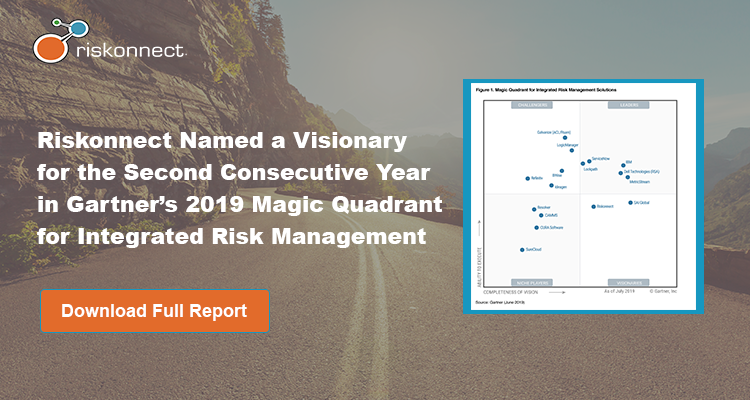By Riaan Bekker, Force Solutions Manager at thryve
Integrated risk management (IRM) is a fairly new discipline, but it’s already making great strides towards transforming all types of organisations. The philosophy is straightforward: instead of risk information languishing in silos and contributing to an incomplete picture of organisational risk, that information can be captured and collated across the organisation through integrated technologies.
More simply put, IRM creates a complete, multilateral, relevant and single version of the truth for enterprise risk. Gartner states that an IRM strategy reduces siloed risk domains and supports dynamic business decision-making via risk-data correlations and shared risk processes. This is gleaned from a new report where the agency highlights the top players in the IRM space and, for the second year in a row, Riskonnect has been named a Visionary in Gartner’s IRM Magic Quadrant.
This isn’t a surprise, at least for me. At thryve we’ve been partnered with and supporters of Riskonnect for several years. It’s a software service that seamlessly collaborates with existing business people, processes and systems, layered on top and integrated through its many APIs – software that enables the communication between different technology systems. Through APIs, the data from one system can be imported into another. At the same time, Riskonnect’s web-service interfaces make it easy for different stakeholders to interact with the service, inputting and observing risk data on their terms.
Gartner saw that as a major benefit, noting in the report that “Riskonnect provides a large number of API connectors for enhancing different user experiences in various use cases and industry-specific workflows.”
Such accommodation of different experiences is crucial if risk data will leave its silos. But that is just one requirement for risk to be transformed. Any proper IRM service has to also appreciate the nuances of different industries, as well as the technical demands of risk management. For example, risk strategies can select different frameworks through which to calculate exposure and responses. Suitably, Riskonnect supports the import and adoption of any popular and recognised risk framework. Gartner placed a lot of emphasis on this feature in its report, which again is why Riskonnect made the cut.
Likewise, it is grounded in supporting many different industries: “Riskonnect has a relatively even distribution across at least four vertical industries (i.e., retail, manufacturing, transportation and insurance), with growth in others.”
The Magic Quadrant has four areas, including Leaders, Challengers and Niche Players. But in the fast-moving world of IRM technology, where continual innovation is key, it’s the visionaries that we should be watching. Only one other company shares the Visionary quadrant with Riskonnect, affirming yet again that it is one of the innovation leaders of the IRM world.
Gartner’s report is thorough and worth reading. It looks at various IRM use-cases – business outcomes, operational outcomes and compliance outcomes – all of which are supported by Riskonnect. Since Riskonnect is a software service, it can be introduced with a small footprint and scaled as the organisation grows to appreciate its contributions. I’ve seen this time and again: minor proofs of concept are met with suspicion among business leaders, who soon convert into its biggest supporters – because it works yet doesn’t have the barriers associated with massive technology investments
Start handling risk more broadly, smartly and quickly than ever before, turning it into a real strategic asset. Riskonnect has the vision to lead the way and Gartner agrees.




